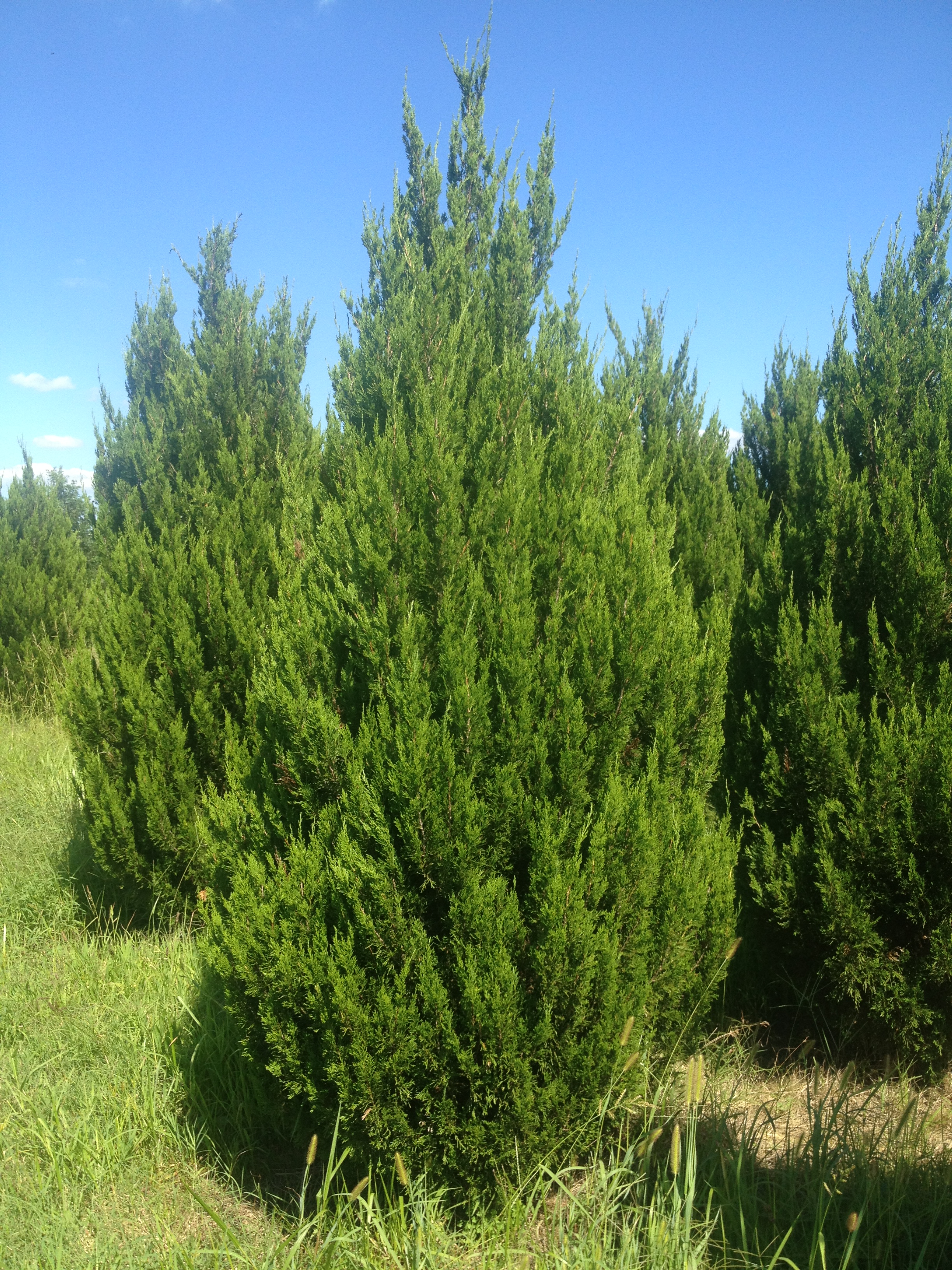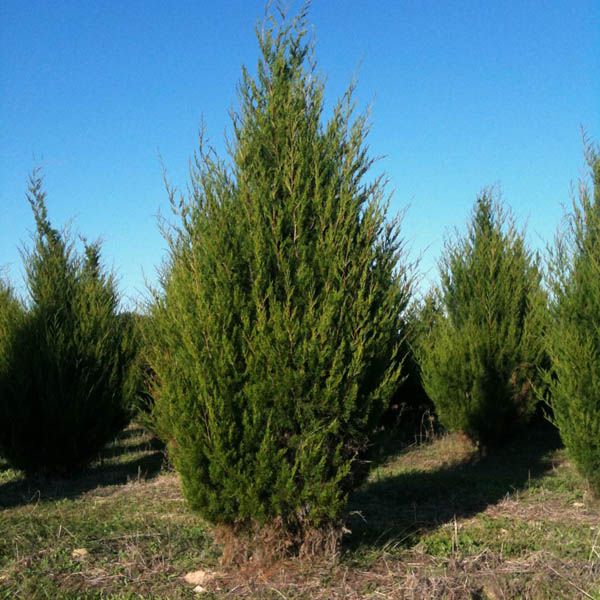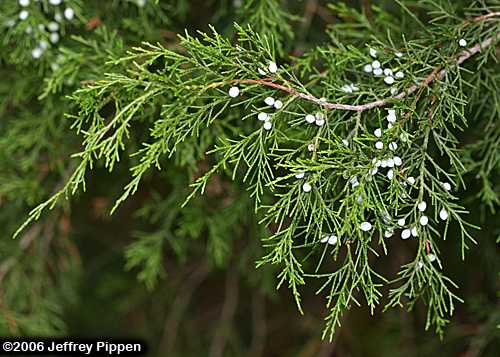Juniperus virginiana
Virginian juniper (Juniperus virginiana), habit and habitat.
The Virginian juniper (Juniperus virginiana), and red cedar, cedar or called Bobwhite Bobwhite red cedar, is the largest species of the genus (Juniperus ). It is native to North America. In 1664 he was introduced to Europe, where it is completely hardy. In Central European gardens is often the small, blue-green pillar shape ' Skyrocket' planted. All parts of the Virginian juniper are highly toxic.
Description
The slow-growing Virginian juniper reaches stature heights 15-25 meters under optimal conditions but also to 40 feet with a trunk diameter up to 1 m. The maximum age is specified with up supremely 300 years. The Virginian juniper forms a taproot. The bark is brown in color. There are both 3-9 mm long needle- shaped leaves and 1 to 5 mm long, scale-like leaves ( they overlap at least a quarter of their length ) are formed. The crushed leaves smell aromatic and have a lifespan of one to three years.
The Virginian juniper is usually monoecious ( monoecious ), getrenntgeschlechtig in individual cases also dioecious ( dioecious ). It blooms in March to May. The stalked, spherical to ovoid, with ripe blue -frosted to brownish- blue cones are 3-7 mm in size and contain one to three seeds. The cones mature in the first year from September to November. The seeds are 1.5 to 4 mm in size.
Occurrence
The distribution area of the Virginian juniper is with two varieties in the eastern half of North America from the Canadian provinces of Quebec and Ontario until after the federal states of North Florida and Texas in the south of the USA. In the states of Colorado and Oregon, this juniper has spread from plantings starting.
The Virginian juniper increased on shallow, nutrient-poor soils or rock to wet to swampy, deep soils. It forms part pure stands, but mostly it occurs in mixed forests of pine and oak species. The variety J. virginiana L. var silicicola can be found on coastal dunes and coastal river sandbars at low altitudes of up to 15 meters.
In the areas of the " Great Plains ", this weed -like juniper occur as an invasive species.
Toxicity
All parts are highly toxic. The Virginian juniper contains the needles about 0.2 % essential oil with the main components sabinene, alpha- pinene, gamma -terpinene and limonene. The constituents of the suspicion exists that they are carcinogenic. After sabinene contact was a significant increase in the frequency of spontaneous tumors by using wood shavings as litter in cages with sensitive strains of mice.
In a poisoning is convulsions, respiratory distress show up to the collapse; in severe cases, death follows in the unconsciousness. On the other hand, Gin is made from the berry -like cones. According to North Carolina State University 's Consumer Horticulture Juniperus virginiana site is only slightly toxic by ingestion.
Use
The Virginian juniper is a tree with reddish-brown heartwood, fragrant core. The wood is durable, easy to edit and to carve. It is used for the production of pencils.
System
There are two varieties:
- Juniperus virginiana L. var virginiana - the specific type occurs in the Canadian provinces of Ontario and Quebec. Furthermore, he settled in the United States, the Federal states of North Dakota, South Dakota, Nebraska, Kansas, Oklahoma and Texas and all other states situated east.
- Juniperus virginiana L. var silicicola (Small) AEMurray ( syn. Juniperus silicicola (Small) LHBailey ) on the shores of the east lying on the Atlantic coast U.S. states north starting with North Carolina, on the south by South Carolina, Georgia and northern Florida; Now westward along the coast on the Gulf of Mexico with Alabama, Mississippi, Louisiana and Texas.
Endangering
The Virginian juniper in its entirety is indeed implemented by the World Conservation Union IUCN Red List of endangered species, but not as endangered ( "Least Concern" ) referred. However, this assessment is made on the basis of outdated data. A new assessment of the situation on the basis of more recent data is given as necessary.










